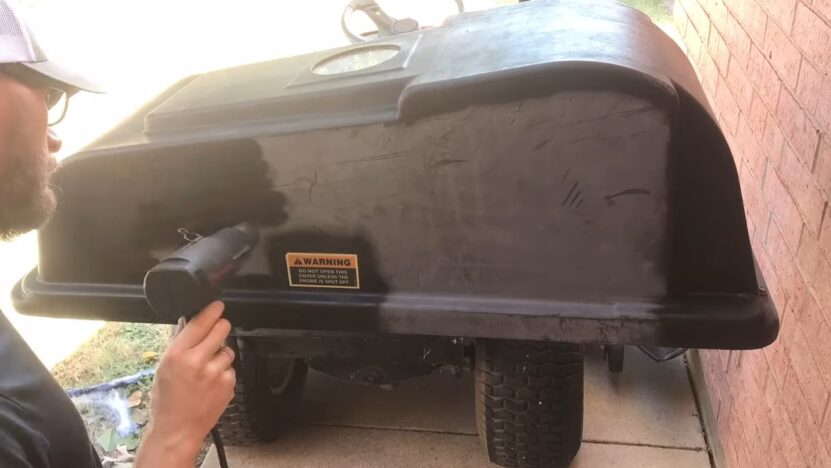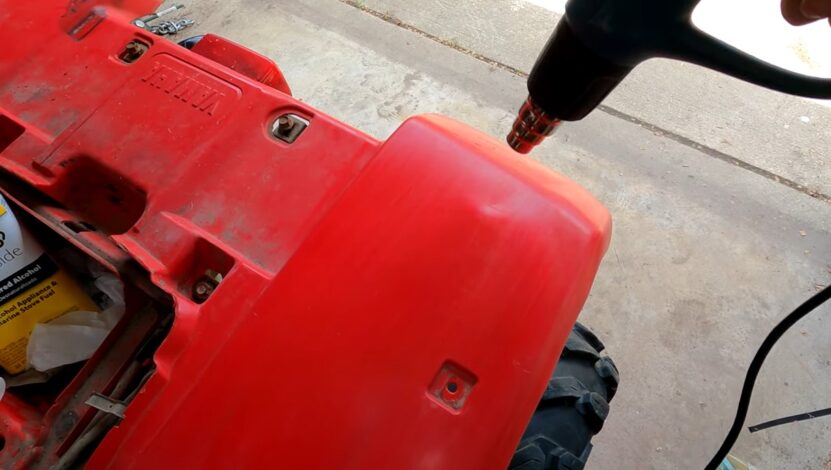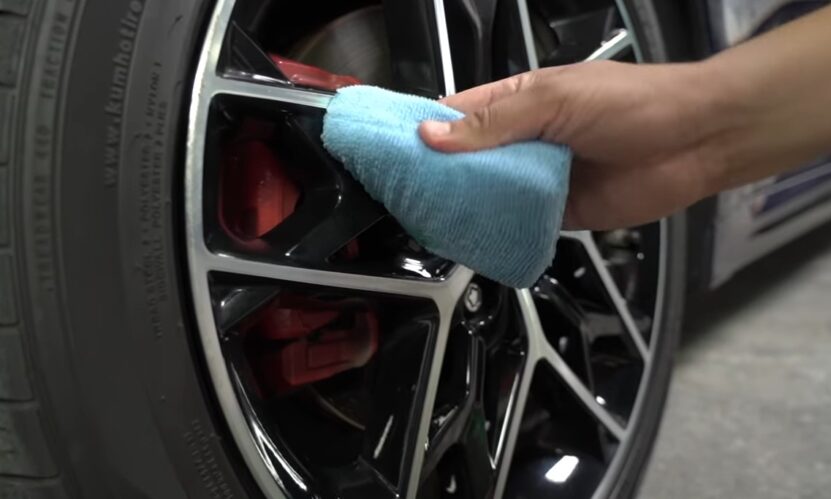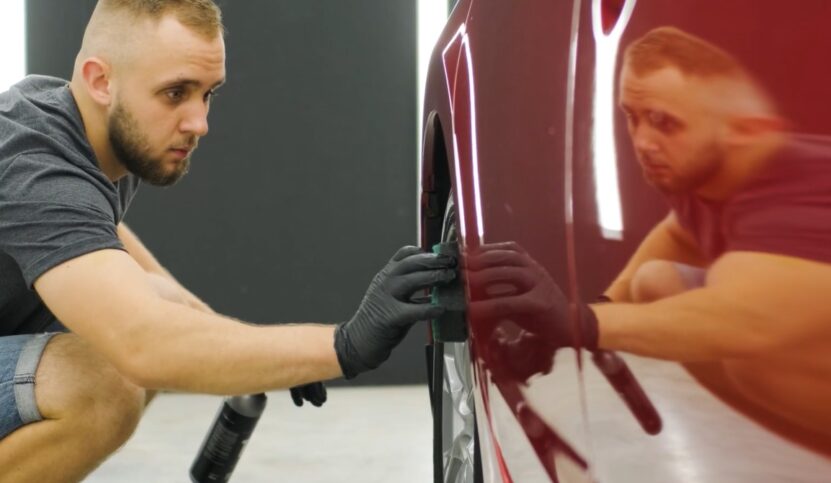Over time, plastic objects can become faded, discolored, and even cracked due to exposure to the sun. But restoring sun-damaged plastic is easier than you might think! In this guide, we’ll share easy tips for bringing your plastic surfaces back to life and achieving a like-new look.
Assess the Damage
Before restoring sun-damaged plastic, assess the damage. Is it faded and discolored? Or warped and cracked? If it’s only discolored, you can restore it with some simple steps. If it’s warped or cracked – it may not be fixable. In this section, we will focus on restoring sun-damaged plastic that is discolored.

Identify the type of plastic
Identifying the type is essential for restoring sun-damaged plastic. Techniques vary for different types. Try these tips:
- Look for a recycling symbol.
- This can tell you the type.
- Check the color and texture.
- Soft and flexible plastic is likely polyethylene or polypropylene.
- Perform a flame test.
- Different types react differently to heat.
Once identified, you can restore the plastic.
Always wear gloves and work in a well-ventilated area!
Evaluate the level of damage
Sun harm can make these materials look aged and worn out. Fading, warping, and cracking are all signs of this. To determine the level of damage, inspect the plastic. Signs of wear and tear should be looked out for. Depending on the level of damage, soap, and water, baking soda or vinegar can be used to clean it. For deeper damage, specialized cleaners or sandpaper might be needed. If it is too badly damaged, it may need to be replaced. Using the appropriate cleaning methods, they can be restored and made to look new.
Determine if restoration is worth the effort

When it comes to restoring them, it is essential to decide if it’s worth the effort. Here are some things to consider:
- The damage’s severity.
- Check how severely the plastic is damaged.
- If it’s only minor, then it’s worth restoring.
- If too severe, restoring may not be cost-effective. Age and condition of plastic.
- See how old and worn it is.
- If it’s already on the edge of breaking down, restoration may not work.
- Cost of restoration materials.
Check how much the products needed to restore the plastic cost. If the cost is equal to or higher than the replacement cost, it may not be worth it. Remember these factors when deciding if restoring sun-damaged plastic is worth it.
Clean the Plastic
Cleaning it is key to restoring it from sun damage. Remove any dirt and debris first. Depending on the damage, there are a few methods. Let us explore them and decide which one is best.
Use a mild cleaning solution
Mix a mild dish of detergent and warm water in a bowl. Take a soft cloth, dip it in the solution, then gently rub over a small area of the plastic. Rinse the cloth in clean water, and wipe over the same area to remove any soapy residue. Keep repeating till the entire surface is clean. Dry it with a clean towel or let it air dry. Don’t use abrasive cleaners or tools for scrubbing, as they can damage the material.
Scrub with a soft-bristled brush
Sun damage can cause fading, cracking, and brittleness in these surfaces. Nevertheless, it’s easy to restore sun-damaged plastic to a nice look. Here’s how:
- Scrub with a soft-bristled brush.
- This helps take off any dirt that has stuck to it.
- Make a cleaning solution of dishwashing soap and warm water.
- Put the solution on the material and scrub it with the brush.
- Rinse with clean water and let air dry. Apply a plastic restorer.
- This is designed to reduce the appearance of sun damage, returning elasticity and color to it.
By following these steps, the minimal effort can restore sun-damaged plastic to a like-new look.
Apply Restoration Product

Get your plastic back to its original condition by using a restoration product. You can buy one made of faded, oxidized, and discolored plastic. But, keep these tips in mind for the best results:
- Follow the instructions on the product
- Don’t apply too much
- Allow the product to sit for the recommended amount of time
- Reapply if needed
Choose a suitable restoration product
It’s vital to get the right restoration product to restore it. Here’s how:
- Identify the type.
- Not all restoration products work for all of them.
- Ensure the product is suitable for your plastic.
- Figure out the level of damage. Severe damage may need a more powerful product, while minor damage may just need a polishing compound.
- Seek out UV protection. Sunlight causes the most damage. A restoration product with added UV protection can help prevent future harm.
- Read reviews. Take time to check customer ratings and reviews to get a quality product that works.
Apply the product evenly
You’ll need to apply the product evenly. Whether a car dashboard, plastic container, or garden chair – here are some tips to get the best results.
- Clean the plastic surface and let it dry.
- Shake the restoration product before use.
- Put a small amount on a clean cloth or pad and rub it in circular motions.
- Work in small sections.
- Add more products as needed for even coverage.
- Wait for it to dry completely before applying another coat, if required.
- Be patient and take your time – proper application is key for an even finish.
Buff the Plastic
This can help remove discoloration and light scratches caused by UV rays. And, it will make it look and shine as if it were new. Here are the different ways to buff it to restore it post-exposure to UV light.
Use a microfiber cloth to buff the surface
Want to restore sun-damaged plastic? Microfiber cloths can help! Here’s how:
- Clean the surface with dish soap and water or a specialized cleaner.
- Then, buff with a microfiber cloth in a circular motion.
- Don’t use too much pressure!
- For extra shine, apply a restorer or wax then buff again with the cloth.
- You’ll remove residue and achieve a polished look.
Now your items look like new!
Repeat the process as needed
Buff the plastic and repeat if necessary for a new look and to prolong its life. Here are some tips:
- Apply a protective coating – this will maintain the shine.
- Avoid direct sunlight – park your vehicle or store the items in the shade.
- Clean regularly – use mild soap and water to prevent dirt build-up.
- Check for damage – inspect regularly for cracks or tears and repair them quickly.
Protect the Plastic

It can get ruined if it’s in the sun too long. To stop this from occurring, take action to guard it against the sun’s rays. Some ideas are:
- Placing a protective layer over it,
- Shifting it away from the sun,
- Or coating it with weather-resistant paint to stop discoloration.
Store the item out of direct sunlight
Protect them with a cover to avoid dirt and dust. Use a restorer such as Armor All or Meguiar’s. Just apply it and wipe away any excess. For opaque or colored plastic items, try white vinegar or baking soda. This will help preserve the original look. Follow these tips and you can keep them looking like new!
Avoid harsh chemicals that can damage the plastic
Harsh chemicals should not be used when restoring sun-damaged plastic. This can cause further damage and deterioration. Therefore, it’s essential to take protective measures. Here are some tips for restoring sun-damaged plastic:
- Wash it with mild soap and water.
- Scrub off any tough stains using a soft-bristled brush or a microfiber cloth.
- Clean the surface with a solution of vinegar and water.
- Polish the plastic with a non-abrasive wax or polish.
- Protect the item with a cloth or plastic sheet when storing it.
- Avoid bleach, acetone, and ammonia as these can damage plastics permanently.
FAQs
Can I restore sun-damaged plastic on my own, or should I hire a professional?
In most cases, they can be restored on your own with the right materials and techniques. However, for severe damage, it may be best to consult a professional.
Can I prevent sun damage to plastic in the first place?
Yes, you can prevent sun damage by storing these objects indoors or in shaded areas, or by using UV protectant sprays.
What types of plastic are most prone to sun damage?
Ones that are more prone to sun damage include polycarbonate, acrylic, and ABS plastic.
Can I use car wax on sun damaged plastic?
It is not recommended to use car wax on them, as it may contain abrasive ingredients that can further damage them.
Can I use bleach on sun damaged plastic?
It is not recommended to use bleach on them, as it may discolor or damage them.
Can I use a power washer to clean sun-damaged plastic?
It is not recommended to use a power washer on them, as it may further damage them. Use a gentle hand wash instead.
Conclusion
By following the tips in this guide, you can restore sun-damaged plastic and enjoy a like-new look for your favorite objects. Whether it’s outdoor furniture, toys, or other plastic items, with a little effort and the right techniques, you can make them look as good as new again. Remember to protect your newly restored plastic from further sun damage with proper care and maintenance.

